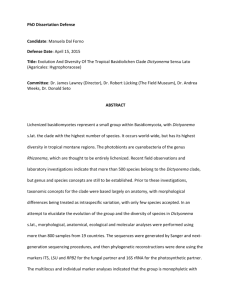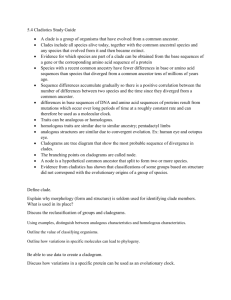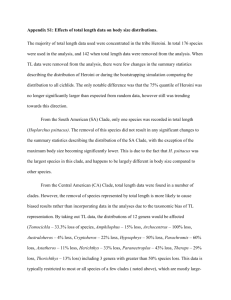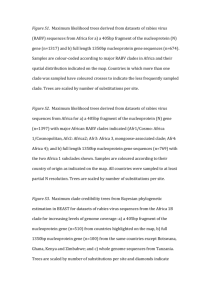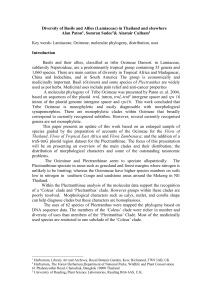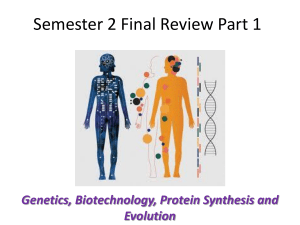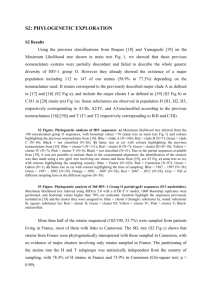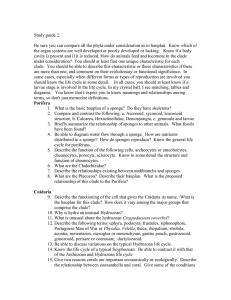Supplementary figures 1 - Proceedings of the Royal Society B
advertisement
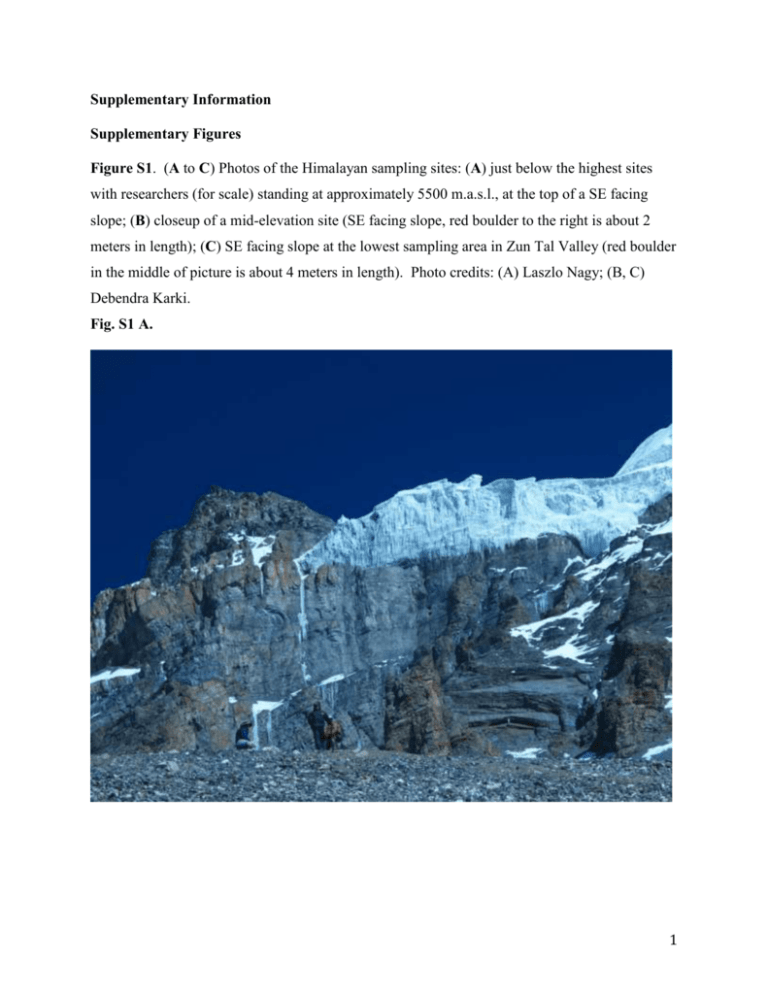
Supplementary Information Supplementary Figures Figure S1. (A to C) Photos of the Himalayan sampling sites: (A) just below the highest sites with researchers (for scale) standing at approximately 5500 m.a.s.l., at the top of a SE facing slope; (B) closeup of a mid-elevation site (SE facing slope, red boulder to the right is about 2 meters in length); (C) SE facing slope at the lowest sampling area in Zun Tal Valley (red boulder in the middle of picture is about 4 meters in length). Photo credits: (A) Laszlo Nagy; (B, C) Debendra Karki. Fig. S1 A. 1 Fig. S1 B. Fig. S1 C. 2 Figure S2. Bayesian consensus tree of cyanobacterial 16S rDNA from high elevation soils of the Himalayas, Colorado and Perú. Bayesian posterior probabilities indicate clade support where values are >80. Clade names are following recent taxonomic and molecular treatments of the cyanobacteria (Hoffmann et al. 2005). Sequences from Thermus thermophilus (EF095713) and Deinococcus radiopugnans (Y11224) were used as out groups to root the tree. Symbols following each regional name represent the relative abundance of each clade; circles (x10), stars (x5) and triangles (x3). Accession numbers for sequences used in the tree are as follows: Nodularia sphaerocarpa AJ781140, Aphanizomenon gracile AY354194, Cylindrospermopsis raciborskii AB115489, Tolypothrix sp. AM230668, Anabaenopsis circularis AF247595, Nostoc sphaeroides EU178144 Nostoc sp. Pannaria cyanobiont EF174228, Stigonema ocellatum AJ544082, Scytonema hofmanni AF132781, Symphyonema sp. AJ544083, Chlorogloeopsis fritschii AB093489, Phormidium autumnale DQ493873, Microcoleus vaginatus str. PCC 9802 AF284803, Oscillatoria lutea AB115967, Trichodesmium tenue AF013029, Arthrospira fusiformis AY672721, Lyngbya aestuarii AB039013, Planktothrix agardhii AB045902, Woronichinia naegeliana AJ781043, Snowella litoralis AJ781041, Microcystis aeruginosa U03402, Cyanothece sp. AF132771, Dermocarpella incrassata AJ344559, Xenococcus sp. EF545606, Stanieria cyanosphaera AF132931, Halospirulina tapeticola Y18791, Rocky Mountain Sandstone Endolith EF522247, Prochlorococcus marinus subsp. Pastoris BX548174, Synechococcus sp. AY172805, Cyanobium sp. AM710372, Limnothrix redekei AJ580007, Pseudanabaena sp AM259268. 3 Fig. S2 4 Figure S3. Bayesian consensus tree of algal 18S rDNA phylogeny from high elevation soils of the Himalayas, Colorado, Antarctica, and the Arctic. Bayesian posterior probabilities are shown at all nodes. The tree was rooted with an out group containing sequences from Syntrichia ruralis (AF023682), and Encalypta ciliata (AF223011). 5 6 Fig. S4. Geographic distance by genetic distance relationships for the dominant cyanobacterial clade (M. vaginatus) from the high Himalayas compared to all sequences (N = 3828 pairwise comparisons) in the same clade from Artic, Antarctic, Andean and Rocky Mountain sites. There was a significant (p < 0.0003, Mantel test) increase in genetic distance with geographic distance. The largest geographic distance in this study was between the Himalayan and Colorado sites (19,000 km). Circles size is proportional to the number of pair-wise comparisons at each point on the graph; with bin sizes of 2, 3, 4, 8 and 65 for the smallest through largest circles, respectively. References 7 Hoffmann L, Komáek J, Kaštovsk´y J (2005) System of cyanoprokaryotes (cyanobacteria) – state in 2004. Algological Studies 117: 95-115 8
